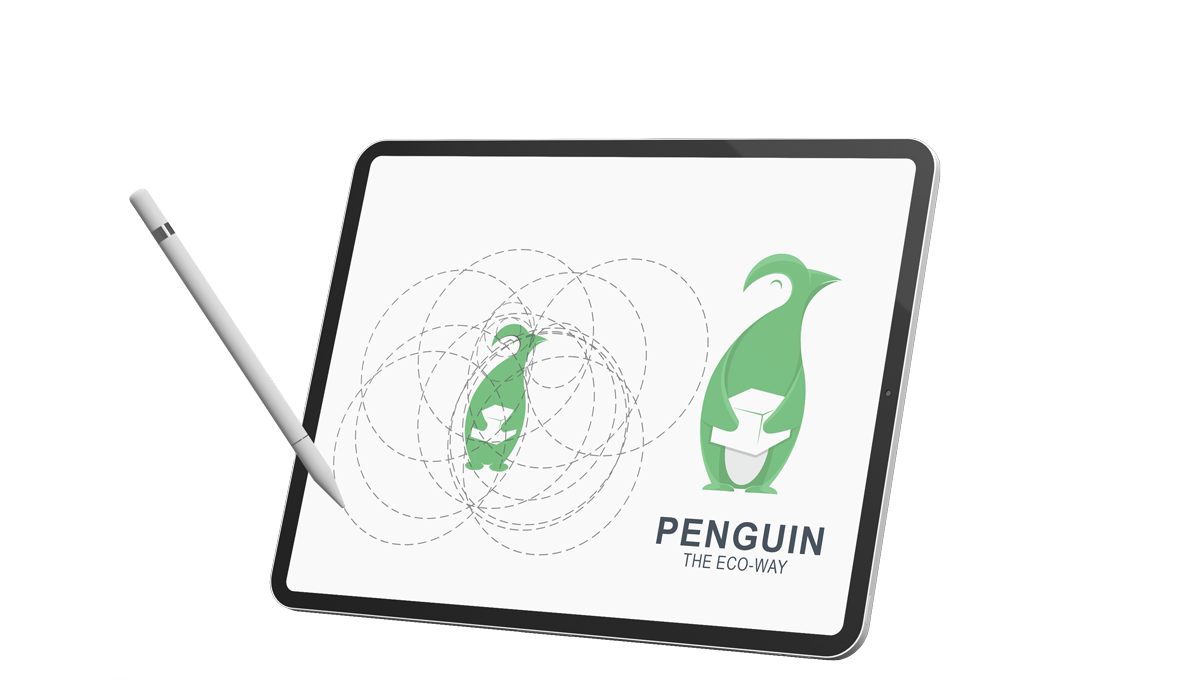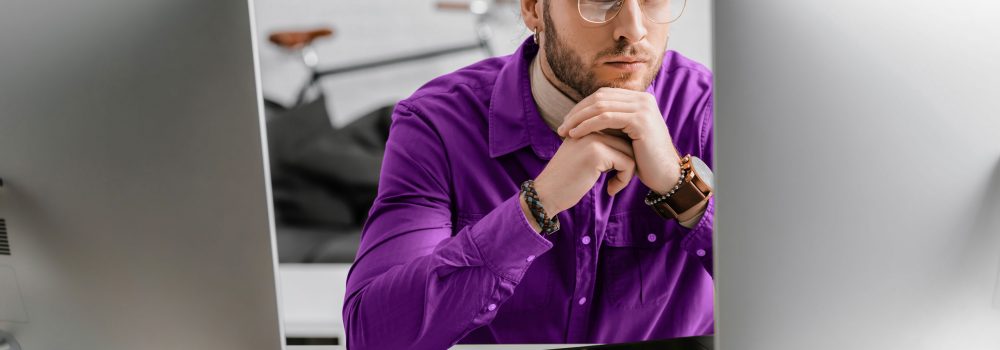Are Graphic Designers Well Paid?
Graphic design is all around us. It is a vital component in advertising, marketing, and branding. Graphic designers use their skills and experience to make products and companies stand out and ensure they are memorable.
At Creative Harmony, we work with only the best creatives, including graphic designers. Read on to find out what graphic design entails and whether it is the right career path for you.
What do Graphic Designers Do?
Graphic designers produce eye-catching visuals for various activities and products, including:
- advertising
- books and magazines
- computer games
- corporate communications
- corporate/brand identity
- exhibitions and displays
- posters
- product packaging
- websites
After agreeing on a brief with the creative director, client, or account manager, the graphic designer develops suitable creative concepts and ideas to fulfil the client’s objectives.
Graphic design requires creative flair, a professional approach to deadlines, cost management and time management, and a willingness to learn new software and processes continually.
Graphic Designer Responsibilities
Graphic designers need to:
- commission photographers and illustrators
- exhibit illustrative skills, create rough sketches and produce print-ready layouts
- develop design briefs that meet the client’s objectives
- estimate how long a job takes and provide suitable quotes for clients
- be creative when redefining design briefs within cost and time constraints
- meet with account managers and clients to discuss job requirements and business objectives
- present finalised concepts and ideas to account managers and clients
- produce high-quality, accurate work
- think creatively to generate new concepts and ideas and develop interactive design
- work effectively as part of a team with other designers, copywriters, printers, stylists, photographers, illustrators, marketing specialists, web developers, and account executives
- work with a range of media, software, and emerging technologies
Graphic Design Salary
Graphic design salaries vary depending on your skills, industry sector, location, and experience. As a general guide, you can expect:
- £18,000 to £23,000 as a junior graphic designer; with experience, this can rise to £27,000.
- £25,000 to £38,000 as a middle-level graphic designer.
- £35,000 to £55,000 as a senior graphic designer or creative lead
- £60,000+ as a creative director.
- £200 – £400 a day as a freelance graphic designer. You can increase the amount you charge as your reputation and body of work grow.
Graphic Design Working Hours
Graphic designers typically work between 37 and 40 hours a week. Many companies now offer flexible start and finish times. Expect to work extra hours when deadlines are approaching.
There are part-time positions, but they are rare. It is advisable to establish professional contacts and gain a decent amount of experience before considering self-employment.
What to Expect as a Graphic Designer
Graphic designs are usually based in shared offices or studios, as many projects require teamwork. There may be occasions when you work alone. Freelancers can opt to work from home, hot desk, or rent office or studio space.
Designers spend a lot of time sitting at desks in front of computers. It can be quite a sedentary job, so it is crucial to balance this out in other areas of your life. Some travel to meet with clients may be required, but it is rare.
Job satisfaction comes from building your reputation through creating high-quality work and seeing your designs in use.
Graphic design positions are available in major towns and cities. Advertising agencies are primarily based in London, the South East, Leeds and Manchester. There is a growing demand for British graphic designers to work internationally with opportunities in Australia, Europe, Japan, and the USA. However, gaining at least a year’s experience in the UK before travelling aboard is advisable.
Graphic Design Qualifications
There is no one route to becoming a graphic designer. Qualifications related to the visual arts are an excellent place to start. Higher or further qualifications in the following subjects increase your chances of securing the job of your dreams:
- 3D design
- communication design
- film and television
- fine art
- graphic design
- illustration
- photography
- visual art.
You can begin your graphic design journey with a design-based course that gives you a good grounding in printing techniques, art history, and design knowledge.
Building a solid portfolio is vital. It enables you to showcase your skills and experience to potential employers and is extremely valuable alongside your qualifications. Familiarise yourself with appropriate software programmes, including Photoshop, InDesign, and Adobe Illustrator, particularly if they were not covered during your courses.
Not all positions require a degree or HND; you may be offered a position based on your experience and the strength of your portfolio. However, gaining qualifications is an excellent way of progressing your career.
Graphic Design Skills
Aside from drawing and technical skills, graphic designers need to show:
- a creative flair
- attention to detail and accuracy when finalising designs
- effective networking and contact building skills
- enthusiasm and passion for design,
- excellent communication skills to interpret and negotiate briefs with clients
- flexibility, especially in teamwork
- good presentation skills and the ability to justify and sell ideas to colleagues and clients
- openness to feedback and willingness to adjust designs
- time and project management skills, with the ability to balance several projects at once
 Graphic Design Work Experience
Graphic Design Work Experience
Placement experience or an internship is advantageous as, if you do well, you gain experience and access to references. Recommendations alongside your learning, experience, and portfolio will help you secure your ideal first job. Internships can sometimes become full-time positions within the company.
If you go down the University route, opportunities for experience and support with your portfolio may be part of your course. Take advantage of any assistance with your portfolio and any job interview support to ensure you are ready for the world of work. The International Society of Typographic Designers (ISTD) offer a student assessment scheme.
Becoming an ISTD member and a member of the Chartered Society of Designers (CSD) while studying is beneficial. Doing so provides access to networking opportunities and potential job opportunities. Joining either society provides access to resources and events that will help you stay up to date with industry developments.
Graphic Design Employers
Most graphic design vacancies are available in agencies specialising in advertising design, including event and identity branding or corporate communication.
In-house graphic design roles are also available in various organisations and businesses, including:
- computer games companies
- design groups
- educational establishments
- local government
- magazines
- multimedia companies
- packaging industry
- publishers
Make speculative applications for internship positions or junior designer roles. Learn what recruiters are looking for and tailor your portfolio and applications to meet their needs. Other tips for securing your first job include:
- address your email to a named person
- creating an effective business card and website
- ensure all images you send are clear and not pixelated. PDFs should be no larger than 8 to 10MB
Graphic Design Professional Development
Except for formal training in industry-specific software, most graphic designers learn on the job. You must be able to use a range of software packages, including:
- Acrobat
- Dreamweaver
- Illustrator
- InDesign
Employers may fund training courses; however, if you are self-employed or freelance, you must find and pay for training courses yourself. Think of it as an investment in your career as the skills you acquire will potentially meet the requirements of a future project.
Professional body memberships can heighten your employability by providing access to valuable resources, training, and advice. Relevant organisations include the International Society of Typographic Designers (ISTD) and the Chartered Society of Designers (CSD).
You can opt to work towards a CSD chartership. To achieve chartered designer status, you must prove you operate professionally and meet competence requirements. Contact the CSD for more information.
Graphic Design Career Prospects
Progressing from your roles as a junior graphic designer is possible within a couple of years. It is essential to see your first few jobs as stepping stones to where you want to aim. Focus on networking, developing a positive reputation, and making contacts as you work in different positions.
Senior design posts may be within your grasp after three years. If you are with a larger organisation, you may be able to work your way up to a management position within the company.
However, breadth of experience is just as necessary as years and moving between organisations can develop your portfolio and widen your knowledge. Be strategic in your career planning and keep your eyes on your end goal.
If you are aiming for self-employment, it is usually possible and financially viable within five to ten years of your first job, depending on your reputation. Gaining CSD chartered status helps with career progression, emphasising your professional working level.
Whether you are looking for your next graphic design role or are looking for the best graphic designers for your project, contact Creative Harmony today. Our team will discuss your needs and work with you to plan a way forward.
If you are looking for expert local graphic designers in the London area and right across the U.K., we look forward to hearing from you
Here at creative harmony, we work with a range of businesses to bring their ideas to life. From websites, digital marketing, and branding, our expert graphic design team can offer you outstanding results and exceptional support.
Get in touch here to discuss how we can help with your design projects.
What Do Graphic Designers Do?
If you are looking for a career that combines creativity, collaboration and using some of the most cutting edge software, you might be considering joining the ranks of fully qualified graphic designers.
You might also be looking for local graphic designers near you and want to understand a little more about how digital designers structure their day.
So let’s nail the brief first, before we delve into a little more detail.
A graphic designer designs visual concepts, usually with specific design software. Important skills are creative flair, communication and the ability to conceptualize clients’ requirements. Graphic designers entice an audience with the visual layout of books, brochures, websites, magazines and logos.
So with the short answer unravelled, so you can understand more about what a graphic designer does, let’s discover exactly what they do. Continue reading more about this topic in this blog post What Does A Graphic Designer Do.



